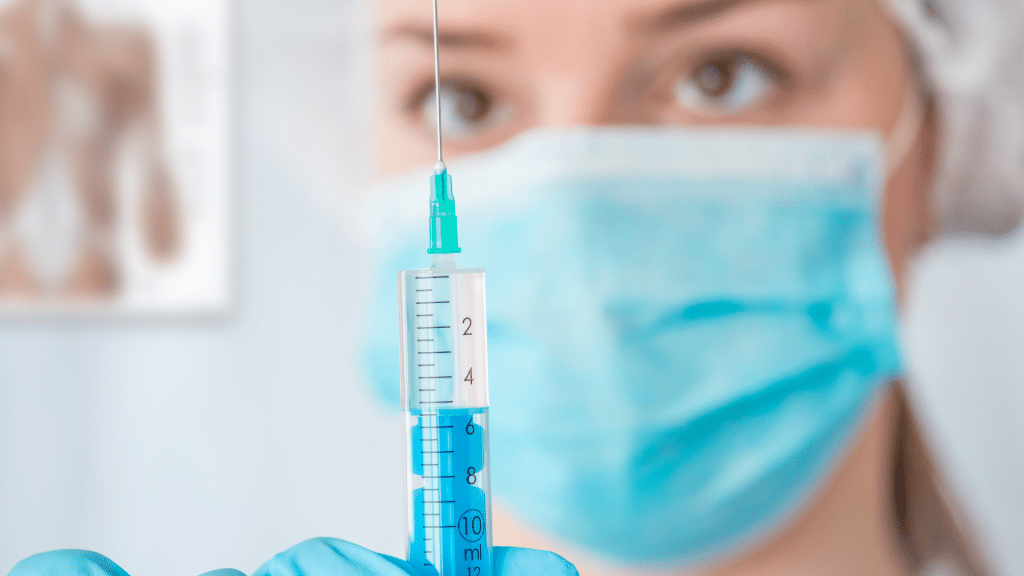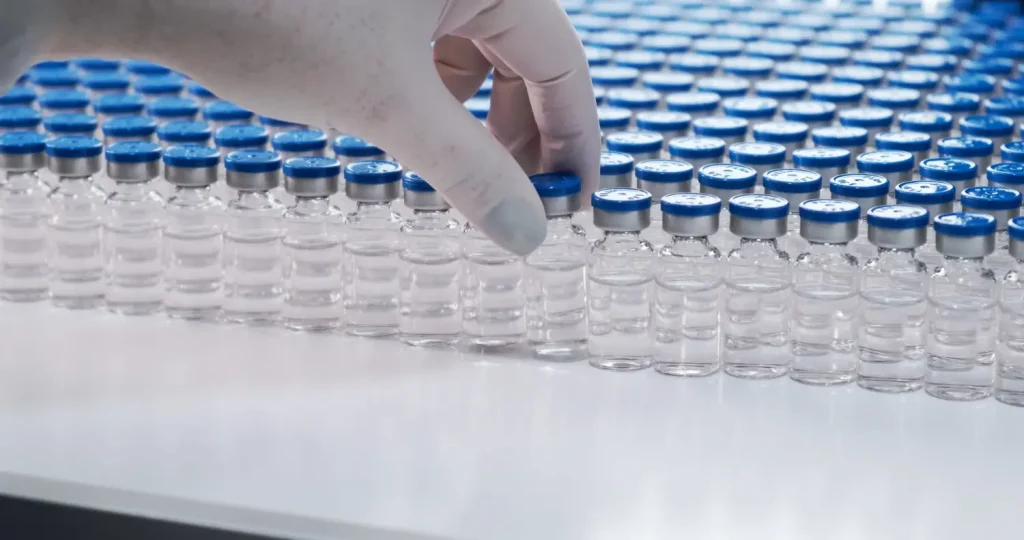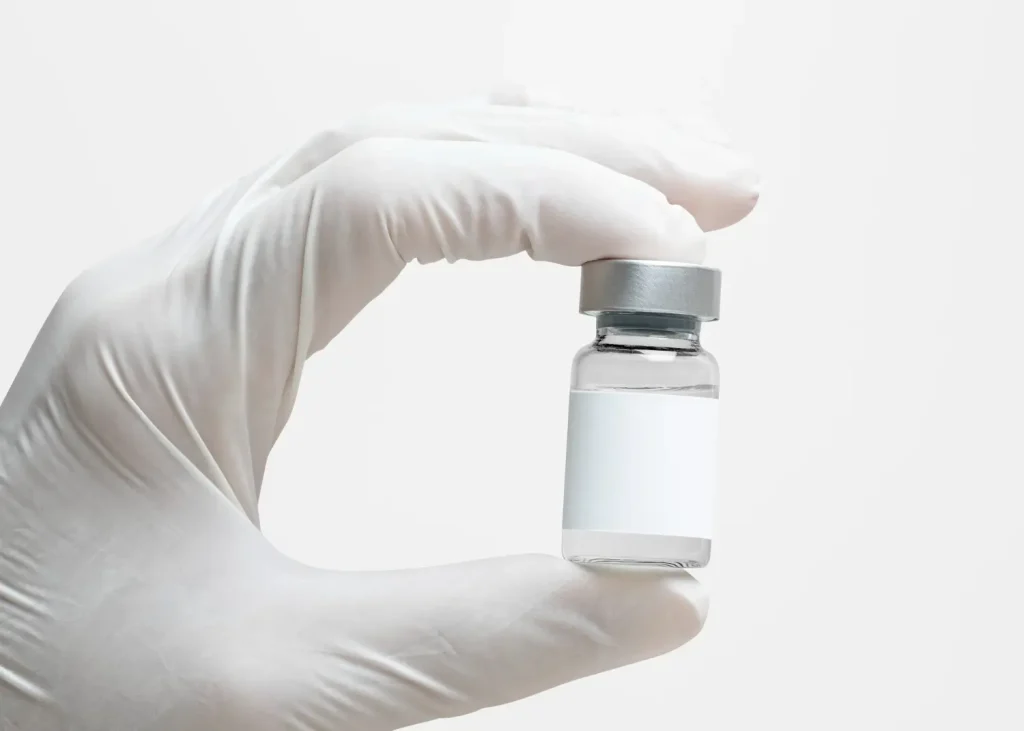While hyaluronic acid fillers are widely regarded for their safety and efficacy in non-surgical facial aesthetics, adverse events can still occur. A systematic review of high-level evidence studies revealed that most complications are transient injection site reactions, with severe adverse events being exceptionally uncommon.
Hyacorp, developed by Bioscience GmbH, is an exclusive line of hyaluronic fillers known for their advanced cross-linked formula, safety, and biocompatibility. As a leading product in the aesthetic medicine industry, Hyacorp’s commitment to quality underscores the importance of informed choices in cosmetic procedures.
This article delves into Hyacorp-related complications, exploring the risks and the comprehensive measures for managing adverse events.
Key Takeaways
- Hyacorp injections carry a potential risk of infection, which can lead to severe complications if not properly managed.
- Understanding the causes, signs, and symptoms of infection following Hyacorp injections is crucial for early recognition and intervention.
- Medical professionals should be familiar with recommended diagnostic approaches, treatment modalities, and preventive measures to ensure safe outcomes for patients undergoing Hyacorp injections.
About: Medical Spa RX provides premium products at the best prices for medical practices. If you want to buy Hyacorp for your practice, the sales representatives at Medical Spa RX can guide you.
Hyacorp Injections and Infection Risk

Hyacorp injections are a type of dermal filler made from hyaluronic acid. These fillers help smooth out wrinkles and give more volume to the skin. Doctors use them to make people look younger without surgery.
Dermal filler injections like Hyacorp break the skin’s surface, letting germs in and causing infection. Putting Hyacorp into the skin has its own risk of infection. This happens with all types of these procedures, not just with Hyacorp.
Infection risks go up if the person doing the injection doesn’t clean things right or uses terrible methods. Also, some patients might have health issues that make getting an infection more likely after getting cosmetic injections like Hyacorp filler for buttocks.
Causes of Infection Following Hyacorp Injections

Improper injection techniques can cause infections after Hyacorp injections. Not knowing facial anatomy well can lead to mistakes—it’s like trying to navigate without a map. Experts must use safe injection methods to avoid problems.
Unsafe practices bring risks, including serious infections. This means healthcare workers need to follow the best safety steps very closely. Every step matters, from how they hold the syringe to keeping everything clean. Cleaning tools that are not well cleaned can let germs spread during Hyacorp injections.
While improper sterilization can lead to infections, doctors should also consider patient-related factors that increase infection risk. Some patients have health issues, making them more likely to get infections from Hyacorp injections.
For example, people with weak immune systems or diabetes might face higher risks. Their bodies don’t fight off germs as well as healthy ones do.
Signs and Symptoms of Infection After Hyacorp Injections

Hyacorp injections, like other procedures that break the skin barrier, carry a risk for infection. Early recognition of infection signs can lead to prompt treatment and better outcomes.
- Redness around the injection site often signals infection. This redness usually spreads beyond the initial puncture point.
- Tenderness or pain at the injection spot indicates a possible infection. It’s more than just discomfort.
- Firmness under the skin near the injection could suggest an abscess or cellulitis forming.
- The heat from the injection area is a direct sign of inflammation and potential infection.
- Swelling in and around the injected zone often accompanies infections, showing that your body is reacting.
- Pus or unusual discharge from the injection site indicates that an infection is present and needs medical attention.
- Fever might arise if your body is fighting off an infection caused by Hyacorp injections, especially if systemic symptoms start showing up.
Spotting signs of infection early makes a big difference. It’s like catching a problem before it grows too big to handle easily. Doctors need to act fast if they see red flags after someone gets Hyacorp injections.
Diagnosis and Treatment of Hyacorp Infections
Diagnosing and treating infections from Hyacorp injections need a careful approach. Early recognition of symptoms is critical for effective management.
- Physical Examination: Always start with a thorough check. Look for redness, swelling, or any unusual signs at the injection site.
- Patient History: Ask about recent Hyacorp injections. Find out when and where they were given. This will help you better understand the infection.
- Testing for Bacteria: Use cultures to test for bacteria. If an infection is suspected, this can confirm it and guide treatment.
- Checking for Herpes Infections: Since early signs are crucial, test for herpes if those symptoms appear. It’s essential to catch it early.
- Ultrasound Imaging: Useful to see if an abscess or fluid build-up needs attention.
Prevention of Infection in Hyacorp Injections
Screening patients correctly is a must to stop infections from Hyacorp injections. We need to know their entire health history, especially past injections. This step helps us see possible problems and fix them fast.
Implementing a sterile technique during injections is crucial in preventing infections. This includes using a new, sterile, single-use needle and syringe for each patient.
- Always Use Gloves: Doctors should wear clean, disposable gloves to prevent the spread of germs.
- Clean The Skin Properly: Before giving an injection, clean the patient’s skin with an alcohol swab to kill any surface bacteria.
- Open Supplies Right Before Use: Only open needles, syringes, and medicine just before they are needed. This keeps them sterile.
- Dispose Of Needles Safely: Immediately dispose of used needles in a puncture-proof containerto avoid contamination.
- Don’t Reuse Anything: Never use needles, syringes, or vials on more than one patient. Even if they look clean, they can still carry germs.
- Check Medication Labels and Expiration Dates: Ensure all medicines are not expired and are labeled clearly to avoid mix-ups.
- Use Proper Injection Techniques: Follow safe injection practices carefully every time to minimize any risk of infection.
- Keep A Clean Workspace: Make sure the area where you prepare and give injections is spotless and well-organized.
- Educate Patients About Post-Injection Care: Advise patients on how to take care of the injection site at home to prevent infections.
Conclusion
Knowing how to handle Hyacorp filler risks makes treatments safer. Good hygiene and skill can lower the chances of infection. Yet, infections may still occur. Early detection and correct care are essential.
With these steps, patients and doctors can anticipate problems, ensuring better outcomes for everyone involved.
FAQs
1. What are Hyacorp fillers?
Hyacorp fillers are a range of hyaluronic acid dermal fillers used for volume restoration and contouring of the face and body.
2. Can I get infections from Hyacorp fillers?
While Hyacorp fillers are generally safe, there is a low risk of infection, particularly with injections in areas like the buttocks.
3. How can I avoid getting an infection?
To avoid infection from Hyacorp fillers, ensure the treatment is performed under sterile conditions and follow aftercare instructions, such as avoiding makeup for 12 hours and skin care products for 24 hours.
4. Can an infection from Hyacopr filler be severe?
While severe infections from Hyacorp fillers are rare, they can occur and may lead to complications such as abscess formation, tissue damage, or systemic spread of infection.
References
MSD Manuals. (n.d.). Overview of Infectious Disease. Retrieved from https://www.msdmanuals.com/home/infections/biology-of-infectious-disease/overview-of-infectious-disease
Van Dyke, S., Hays, G. P., Caglia, A. E., & Caglia, M. (2010). Severe Acute Local Reactions to a Hyaluronic Acid-derived Dermal Filler. The Journal of clinical and aesthetic dermatology, 3(5), 32–35.
Snozzi, P., & van Loghem, J. A. J. (2018). Complication Management following Rejuvenation Procedures with Hyaluronic Acid Fillers-an Algorithm-based Approach. Plastic and reconstructive surgery. Global open, 6(12), e2061. https://doi.org/10.1097/GOX.0000000000002061





















